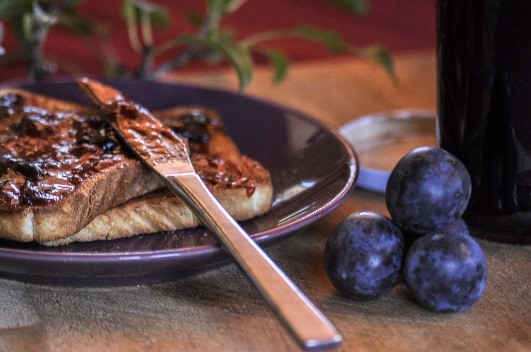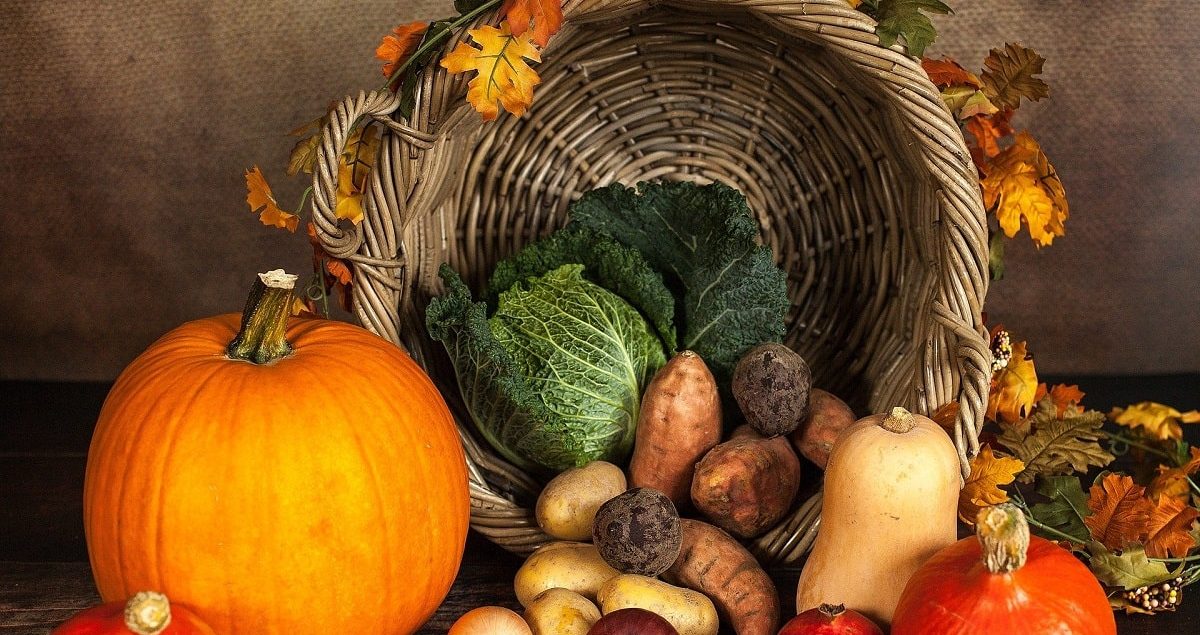Jak zmienić dietę na jesień? Witaminy z natury.
Jesień to dobra pora roku, jeśli chcemy wprowadzić zmiany w swoim sposobie odżywiania, zacząć jeść regularnie i zdrowo. Stragany uginają się od świeżych warzyw i owoców, pogoda nadal sprzyja aktywności na świeżym powietrzu, natomiast częstotliwość wyjazdów, które często zaburzają nasze postanowienia dietetyczne jest zazwyczaj znacznie ograniczona w porównaniu do sezonu letniego. W związku z tym jesienią zwykle łatwiej jest nam osiągnąć założone cele.
Jaka dieta jesienią?
Jadłospis powinien być przede wszystkim urozmaicony i dobrze zbilansowany, aby uchronić nas przed niedoborami pokarmowymi. Dieta niedoborowa w białko, witaminy i składniki mineralne może przyczynić się do osłabienia funkcjonowania układu odpornościowego. W związku z tym, nie powinniśmy eliminować żadnej z grup produktów. W naszym menu powinny się znaleźć sezonowe warzywa, owoce, produkty zbożowe (głównie pełnoziarniste), chude mięso, ryby, jaja, nabiał, nasiona strączkowe a także zdrowe tłuszcze (pochodzące zwłaszcza z olejów roślinnych, orzechów, nasion i pestek). Jeśli eliminujemy jakąś grupę produktów (np. nabiał, mięso), warto skonsultować się z dietetykiem, który wyjaśni w jaki sposób uniknąć niedoborów na diecie eliminacyjnej.
Osoby, które cierpią na sezonowe zaburzenia nastroju powinny zadbać o odpowiedną ilość produktów będących źródłem tryptofanu, który wpływa na stężenie serotoniny nazywanej hormonem szczęścia, m. in. banany, jajka, mięso kurczaka, indyka, ryby, pestki dyni, nasiona słonecznika, orzechy, sery, mleko.
Witamina na odporność
Dodatkowo, w sezonie jesiennym, kiedy brakuje ekspozycji na światło słoneczne, nie powinniśmy zapominać o suplementacji witaminą D3. Odpowiednią dawkę powinien dobrać lekarz rodzinny.
Wraz z pojawieniem się chłodniejszych dni zwykle potrzebujemy nieco więcej cieplejszych posiłków, warto zacząć dzień od ciepłego śniadania, np. owsianki, omletu oraz zjeść przynajmniej jeden dodatkowy ciepły posiłek w ciągu dnia (np. zupa lub drugie danie na ciepło).
Kupuj sezonowo i lokalnie
Pomimo całorocznego dostępu do importowanych, świeżych warzyw i owoców warto sięgać po produkty lokalne. Bazarki pełne są warzyw i owoców do późnej jesieni. Najlepiej jest wybierać produkty sezonowe. Jesienią będą to:
cukinia, pomidory, papryka, bakłażany, kapusta czerwona, włoska lub biała, cykoria, jarmuż, kalafior, brokuł, brukselka, dynia, kalarepka, por, czosnek, cebula, warzywa korzeniowe: buraki, marchew, pietruszka, seler, rzodkiew, rzepa oraz jabłka, gruszki, śliwki, winogrona, niektóre odmiany malin, borówek, żurawina. Warzywa warto zjadać w jak najmniej przetworzonej formie, czyli na surowo, lekko zblanszowane, ugotowane na parze, ale również jako dodatek do zup, sosów, np. leczo, past kanapkowych, świeżo wyciskanych soków.
Zrób zapasy na zimę
Warto wybierać takie sposoby przechowywania żywności, które pozwolą jej zachować jak najwięcej wartości odżywczych. Jeśli chodzi o owoce i warzywa, bardzo dobrym rozwiązaniem jest ich mrożenie. Straty wartości odżywczych są tutaj niewielkie. Warto zwłaszcza zamrozić drobne owoce jagodowe (np. jagody, borówki, maliny, porzeczki, truskawki), na które sezon trwa bardzo krótko. Cechują się one bardzo wysoką wartością odżywczą, są bogate m. in. w przeciwutleniacze i rozpuszczalny błonnik pokarmowy. Do późnej jesieni dostępne będą maliny i żurawina które można przechować w taki sposób. Jesienią i zimą mrożonki można wykorzystać do koktajli, jako dodatek do ciast, omletów, owsianek.
Kolejną metodą, którą warto polecić jest kiszenie. Kisić można nie tylko dobrze wszystkim znane ogórki lub kapustę. Świetnie smakują kiszone buraczki, marchewka oraz inne warzywa. Nie polecam natomiast przetworów z dodatkiem cukru i octu (marynowanych, konserwowych).

Powidła śliwkowe
Przepis: Bardzo dojrzałe śliwki węgierki pozbaw pestek i przełóż do szerokiego garnka. Zagotuj i duś do odparowania soku. Ostudź, np. przez noc. Kolejnego dnia ponownie zagotuj i smaż na maleńkim ogniu do zgęstnienia. Uważaj, aby nie przypalić powideł, możesz delikatnie zamieszać je drewnianą łyżką. Ostudź. Powtórz smażenie jeszcze jeden raz i gorące przełóż do wyparzonych słoiczków, powidła powinny być bardzo gęste, klejące się do łyżki. Powidła są kaloryczne, dlatego należy ich używać w rozsądnych ilościach. 1 łyżka powideł (20 g) dostarcza około 45 kcal i może być zamiennikiem połówki sporego jabłka (90 g).
Autor tekstu:

